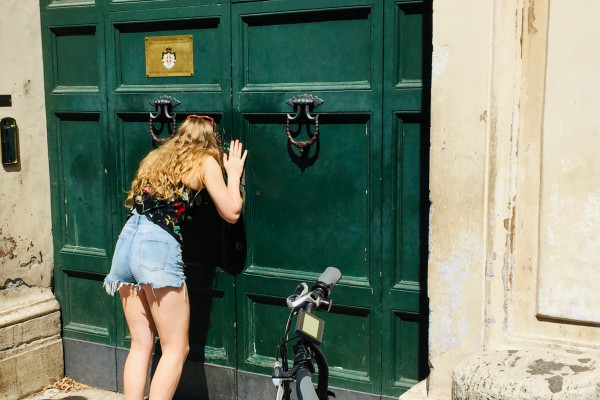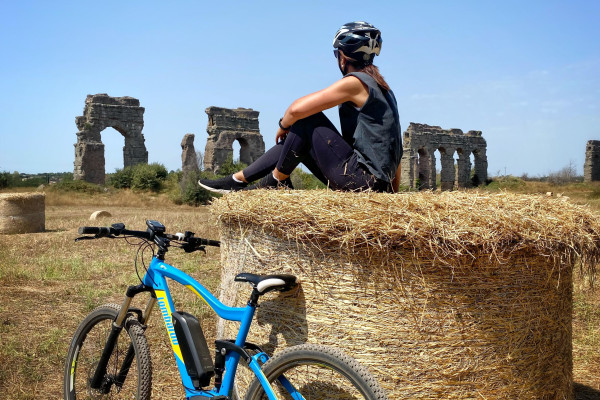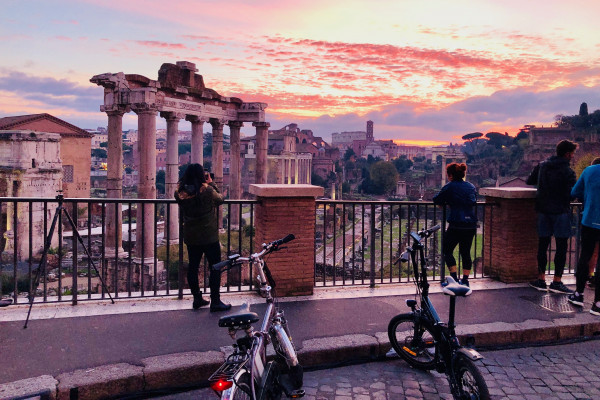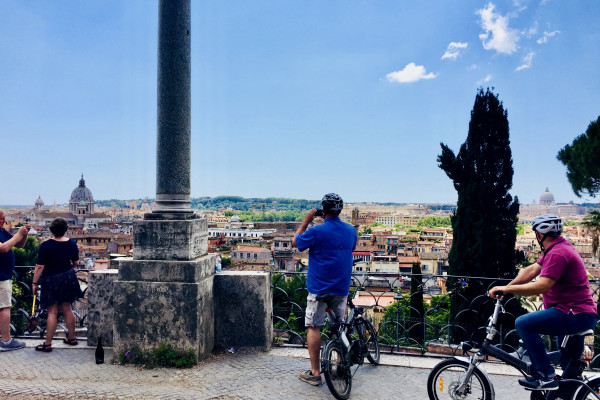Best Stops along the Appian Way in Rome by Bike
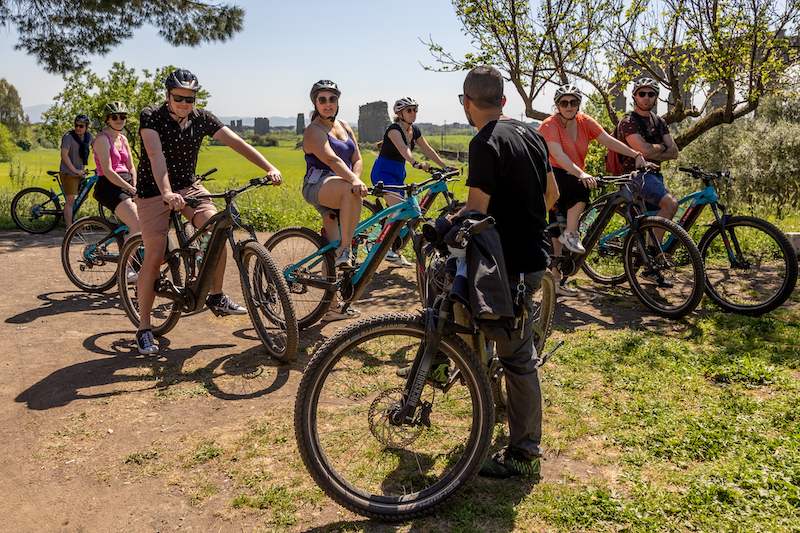
If you’re looking to experience the rich history of Rome while soaking in breathtaking landscapes, there’s no better way to do it than cycling along the Appian Way in Rome. Known as one of the oldest and most important roads of the Roman Empire, the Appian Way, or Via Appia Antica, offers a perfect blend of ancient history, natural beauty, and panoramic viewpoints that make it an ideal route for cyclists.
This legendary path, often referred to as the “Queen of Roads,” stretches from Rome to the southern part of Italy and is dotted with fascinating ruins, tombs, catacombs, and natural reserves that transport visitors back in time. On an e-bike, you can easily cover more ground and enjoy the scenic beauty of the Appian Way without the strain of traditional biking.
In this blog post, we’ll explore some of the best stops and panoramic points along the Appian Way, as well as provide useful tips for navigating this historic path by bike.
Appian Way in Rome by bike
1. Porta San Sebastiano: the Gateway to the Appian Way
Your adventure begins at Porta San Sebastiano, part of the ancient Aurelian Walls, and one of the largest gates of the city. It serves as the main entrance to the Appian Way and offers a glimpse of what awaits you on this historic route.
From the gate, you’ll immediately sense the transition from the bustling city to a quieter, more serene environment, as ancient Roman cobblestones guide your journey. Stop here to admire the impressive architecture of the gate and even visit the Museum of the Walls for an overview of Rome’s defensive structures throughout history.
Panoramic Viewpoint: From the top of Porta San Sebastiano, you can take in sweeping views of the Roman countryside, giving you a preview of the stunning scenery you’ll encounter along the way.
2. Catacombs of San Callisto and San Sebastiano: a journey underground
A short ride down the road, you’ll find two of Rome’s most famous underground burial sites: the Catacombs of San Callisto and the Catacombs of San Sebastiano. These labyrinthine networks of tunnels are home to the tombs of early Christians, martyrs, and even several popes.
The Catacombs of San Callisto are among the largest and most important, containing over half a million graves. Meanwhile, the Catacombs of San Sebastiano, which also house the church of the same name, offer a more intimate look at ancient Christian burial practices. Both locations provide guided tours that delve into the historical and spiritual significance of these underground chambers.
Tip: Since the catacombs are an essential stop on any Appian Way bike tour, consider taking a break here to explore the tunnels.
3. Circus of Maxentius: a forgotten Roman Stadium
A little further along the Appian Way, you’ll come across the Circus of Maxentius, an ancient Roman chariot-racing stadium. This lesser-known site is one of the best-preserved Roman circuses outside the city center, and its quiet atmosphere often feels like a hidden treasure.
Built in the early 4th century AD by Emperor Maxentius, this vast complex once held thrilling races, complete with tiered seating for over 10,000 spectators. Today, it’s a peaceful area, perfect for taking a breather and marveling at the scale of Roman architecture.
The surrounding green fields and ruins make this spot especially scenic. The quiet serenity of the place, with its open spaces and ancient structures, provides an opportunity for reflection as you imagine the grandeur of what once took place here.
Panoramic Viewpoint: The wide-open spaces and ruins of the Circus of Maxentius offer beautiful views of the Roman countryside, especially in the golden light of early morning or late afternoon.
4. Tomb of Cecilia Metella: a Roman Landmark
One of the most iconic stops along the Appian Way is the Tomb of Cecilia Metella, a massive cylindrical tomb built in the 1st century BC for a noblewoman from a prominent Roman family. The towering structure stands as a testament to the architectural skills of the Romans, and its strategic position along the road made it a landmark for travelers in antiquity.
The area around the tomb is also a great spot to explore on foot, as you can walk through the nearby ruins and admire the impressive masonry up close. If you’re a fan of Roman history and architecture, this stop is a must.
Panoramic Viewpoint: The elevated position of the Tomb of Cecilia Metella provides fantastic views of the surrounding countryside. From here, you can see far along the ancient road, surrounded by the peaceful Roman landscape.
5. Parco della Caffarella: Nature and History Collide
As you continue biking along the Appian Way, you’ll reach Parco della Caffarella, a sprawling green park that blends natural beauty with ancient ruins. This area is part of the larger Appia Antica Regional Park, a protected zone that preserves the landscape much as it was in Roman times.
The Caffarella Valley is perfect for those who enjoy nature alongside history. The park is home to ancient springs, rustic farmhouses, and the Nymphaeum of Egeria, a Roman grotto dedicated to the nymph who was said to have advised King Numa Pompilius. This park is ideal for a leisurely ride, with its flat paths and picturesque landscapes.
Panoramic Viewpoint: Ride through the park to find quiet spots where you can enjoy sweeping views of the rolling hills and countryside. The Caffarella Valley is especially lovely during spring, when wildflowers dot the fields.
6. The Appian Way’s Scenic End: Quintili Villa and beyond
As you venture further along the Appian Way, you’ll come across the Villa dei Quintili, one of the largest and most opulent villas of the Roman Empire. The sprawling ruins are located a few kilometers outside of Rome, and they offer a sense of the wealth and luxury enjoyed by Rome’s elite.
The villa is surrounded by vast fields and rolling hills, making it a serene and scenic stop on your bike tour. The further you travel along the Appian Way, the more the city’s noise fades, and the peacefulness of the countryside takes over.
Panoramic Viewpoint: The area around the Villa dei Quintili provides stunning views of the Roman countryside, especially as you head into the more rural stretches of the Appian Way. This is a fantastic place to pause, take in the fresh air, and enjoy the tranquility of nature.
Navigating the Appian Way in Rome by Bike
The Appian Way is a mix of ancient cobblestones and modern pavement, which can be a bit challenging in some spots. Luckily, an e-bike makes this route much easier to navigate, allowing you to cover more ground without getting exhausted.
The EsBike Appian Way Tour offers a guided experience that takes the guesswork out of navigating the route and ensures you don’t miss any of the essential stops along the way. You’ll ride through history, from the ancient gates of the city to the peaceful countryside, all while learning about the rich stories of each site.
Whether you’re a history buff, a nature lover, or simply looking for a unique way to explore Rome, the Appian Way is a must-ride experience. The scenic beauty and historical significance of the stops along the way make this more than just a bike ride—it’s a journey through time, offering unforgettable memories with each turn of the wheel.
Check out the Appian Way Bike Tour for an in-depth look at this iconic Roman route and begin your adventure today!
Book With Extra Flexibility
Choose new departure dates if your plans change.
Reach out to us anytime via online chat, phone or email.
Get credit for future trips if you need more time to decide.
Change to a different tour run by the same tour operator.



